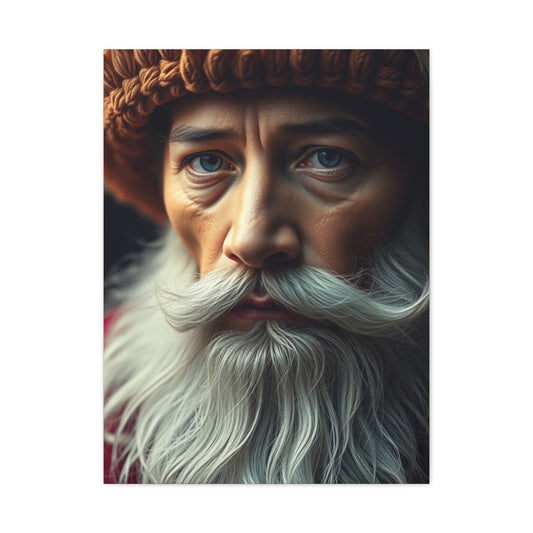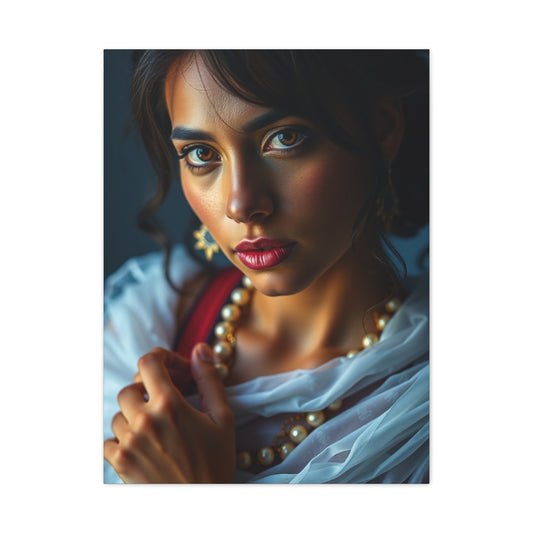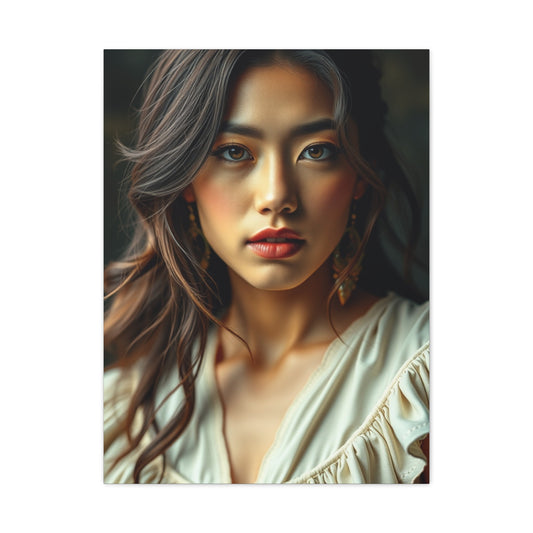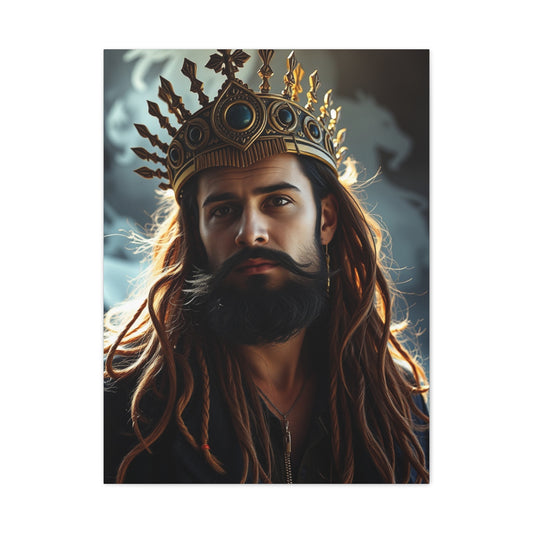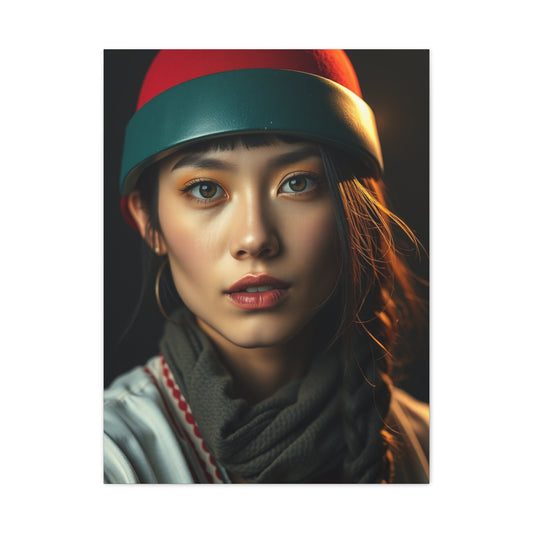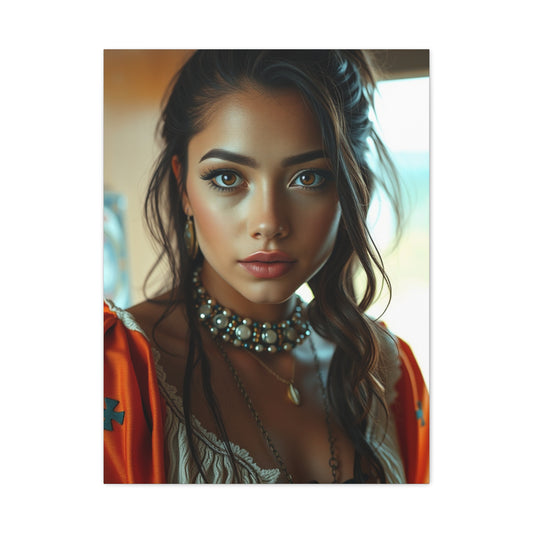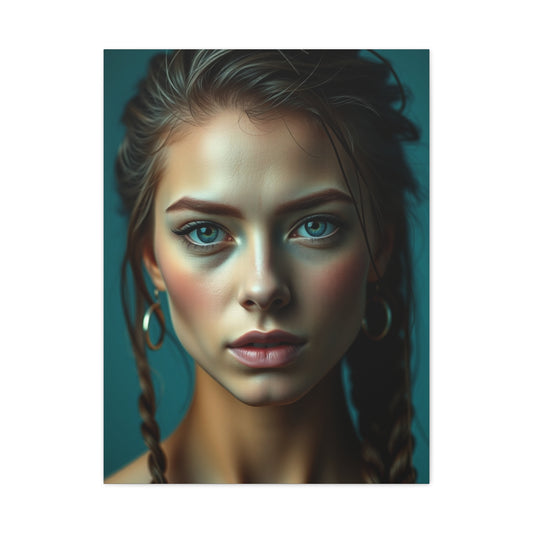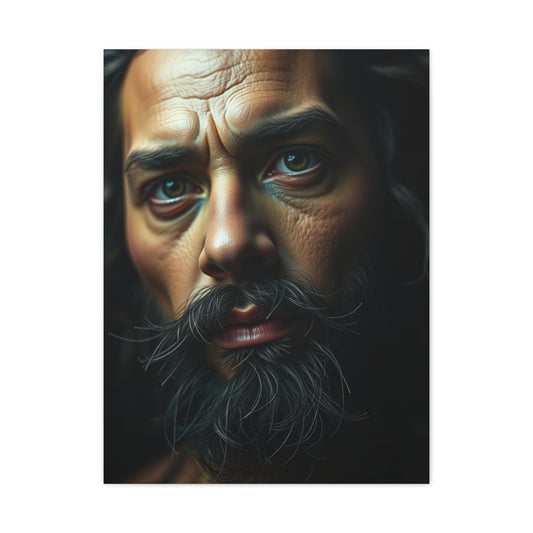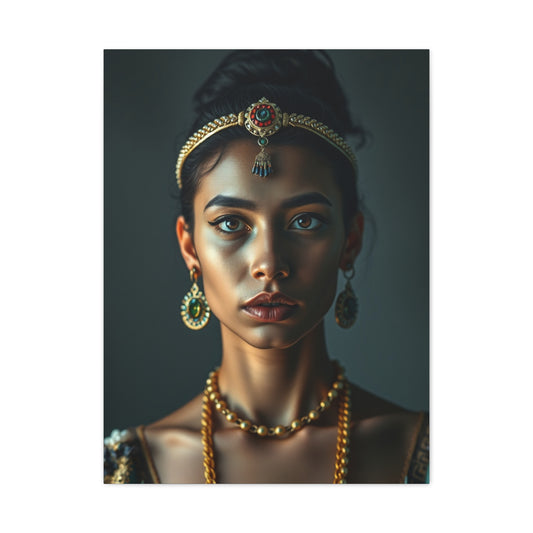Transform Your Home with Hipstoric Wall Art and Vintage Elegance
The term vintage often evokes a sense of nostalgia, a yearning for styles and craftsmanship that have endured through the passage of time. Unlike fleeting trends, vintage design celebrates enduring quality, historical significance, and subtle elegance. Spanning a wide spectrum from the ornate intricacies of the Victorian period to the minimalist sophistication of Mid-century design, vintage aesthetics do not belong to a singular era. Instead, they form a continuum of artistic expression, craftsmanship, and cultural resonance. One of the most accessible and transformative ways to infuse a space with vintage character is through wall art. Carefully selected pieces can serve as conduits to a bygone era, offering both visual delight and a narrative thread that connects the present with the past.
When considering vintage wall art, the goal is not merely to acquire something old but to choose pieces that evoke history while harmonizing with your surroundings. The artwork does not need to be genuinely antique; rather, it should resonate with elements that recall traditional techniques, iconic visual motifs, or historical narratives. A painting or print that references classical florals, architectural sketches, pastoral scenes, or the subtle chiaroscuro of early photographic styles can imbue a room with a sense of timelessness. Similarly, a piece that demonstrates careful attention to detail and color harmony evokes the sensibilities of a prior era, creating an atmosphere that feels cultivated and enduring.
Selecting vintage wall art begins with understanding your home’s inherent character. Architectural features, room dimensions, and lighting all play a pivotal role in determining which styles will feel cohesive. High ceilings adorned with crown molding may lend themselves to grand, classical canvases reminiscent of the 18th or 19th century, while cozier, compact spaces can be complemented by more intimate compositions such as botanical studies or delicate watercolors. The interplay between scale and space is critical; a work that is too small may appear inconsequential, whereas an oversized piece in a diminutive room risks overwhelming the viewer. Observing the proportions of your walls and noting the natural light throughout the day can help guide your selection, ensuring that the artwork enhances rather than competes with the room’s inherent character.
Beyond scale, the choice of subject matter profoundly influences the ambiance of a room. Historical landscapes, for instance, can transport viewers to distant locales and bygone centuries, invoking both curiosity and reverence. Portraiture, whether of notable figures or anonymous subjects, offers a glimpse into societal norms and aesthetics of past eras, bridging the gap between personal taste and historical narrative. Additionally, still-life compositions—often overlooked in contemporary design—highlight meticulous attention to form, shadow, and color, embodying the meticulous artistry that characterizes vintage sensibilities. Incorporating such imagery provides an additional layer of depth to the space, encouraging both reflection and admiration.
Color palette is another defining element when selecting vintage wall art. While contemporary interiors may favor stark minimalism or highly saturated hues, vintage works often embrace softer, more nuanced tones. Sepia, muted pastels, ochres, and earthy greens are prevalent, alongside more vibrant jewel tones in certain periods. These colors not only reflect the materials and pigments available at the time of creation but also contribute to a sense of warmth and depth within a room. Selecting pieces whose hues harmonize with your furnishings and architectural elements ensures a cohesive visual narrative and prevents the artwork from appearing discordant or superficial.
Textures within vintage wall art are equally significant. A painting executed with impasto techniques, for instance, produces a tangible dimensionality that invites viewers to experience the work beyond mere visual observation. Similarly, lithographs, etchings, and other printmaking techniques exhibit subtleties in line, shading, and surface texture that cannot be replicated digitally. Appreciating and incorporating these textural nuances not only enriches the visual experience but also pays homage to the artisanal skill intrinsic to historical artwork. By consciously considering surface and finish, you can introduce an additional tactile layer that reinforces the authenticity and gravitas of your vintage interior.
Placement and framing also contribute significantly to the impact of vintage wall art. Frames serve not merely as protective enclosures but as extensions of the artwork itself, capable of complementing or transforming the piece. Ornate gilded frames may enhance classical compositions, whereas minimalist wooden frames may better suit mid-century prints or abstract studies. Beyond aesthetics, the physical positioning of artwork within a room should respect visual balance. Hanging pieces at eye level, aligning them with architectural features, or creating thoughtful groupings of multiple works ensures that the room maintains an intuitive flow and visual coherence. The intentional interplay between art, furniture, and space allows each element to shine individually while contributing to an overall sense of harmony.
In addition to traditional canvases and framed prints, exploring alternative formats can enhance the versatility of vintage-inspired décor. Tapestries, wall-mounted panels, and even repurposed architectural elements can serve as artistic focal points. These unconventional mediums allow for an inventive approach to storytelling, infusing spaces with texture, history, and dimensionality. By broadening the scope of what qualifies as wall art, you open avenues for creativity that transcend conventional boundaries, creating an environment that feels curated rather than assembled.
Understanding the philosophical underpinnings of vintage décor is essential to making informed choices. Vintage design is not solely about replication but about resonance. A room can simultaneously honor historical aesthetics while accommodating contemporary functionality. This dynamic interplay is achieved through the selective introduction of pieces that embody craftsmanship, narrative, and aesthetic continuity. Artworks that capture fleeting moments, portray classical motifs, or employ traditional techniques serve as anchors within a room, grounding the space in a sense of continuity and cultivated taste.
A practical approach to integrating vintage wall art involves iterative experimentation. Begin by selecting a few foundational pieces that strongly reflect your desired era or aesthetic. Assess how these works interact with existing furnishings, lighting, and architectural features. Once the foundational pieces are in place, complementary artwork can be introduced to build depth, contrast, and narrative cohesion. This process allows for a layered, evolving environment that feels intentional and nuanced rather than static or contrived. Over time, your collection of vintage wall art becomes a visual chronicle of taste, exploration, and appreciation for historical artistry.
Finally, the emotional resonance of vintage wall art should not be underestimated. Beyond aesthetics, these pieces often carry intangible qualities—nostalgia, curiosity, contemplation—that elevate a room from mere functionality to experiential richness. By carefully selecting artwork that speaks to personal sensibilities while remaining contextually appropriate, you create spaces that engage the senses, stimulate reflection, and cultivate a serene yet evocative atmosphere. Vintage wall art, when thoughtfully chosen and thoughtfully placed, transforms walls from inert partitions into vibrant storytelling surfaces imbued with character, history, and enduring charm.
Interpreting Vintage Styles for Your Space
Vintage design is an intricate tapestry woven from diverse periods, each with its own visual language, motifs, and cultural significance. To infuse a living space with vintage charm, it is essential to discern which era resonates with your personal sensibilities and complements the architecture of your home. Far beyond a superficial nod to nostalgia, interpreting vintage style requires an appreciation for historical context, aesthetic nuance, and the ways in which past design principles can coexist with contemporary living.
At its core, vintage style is a dialogue between the past and the present. It is less about rigid historical replication and more about extracting elements that evoke time-honored craftsmanship, intricate detail, and enduring visual appeal. Architectural features often provide a starting point for identifying an appropriate vintage style. Homes built in the 1920s, for instance, may naturally lend themselves to Art Deco embellishments, characterized by geometric patterns, rich materials, and symmetrical designs. In contrast, a Craftsman bungalow might better accommodate softer, rustic, or shabby-chic décor, emphasizing handcrafted woodwork, natural textures, and muted, earthy colors. By harmonizing the chosen vintage period with your home’s intrinsic architectural cues, the resulting aesthetic feels organic and cohesive rather than imposed or contrived.
Understanding the defining characteristics of various vintage eras is critical to making informed decisions about wall art and decorative elements. The Victorian period, for example, is renowned for its opulence, intricate patterns, and dark, jewel-toned palettes. Artwork from this era often features florid landscapes, ornate portraiture, or still-life compositions with lavish attention to detail. Introducing pieces inspired by Victorian sensibilities can imbue a room with sophistication, grandeur, and a quiet sense of historical gravitas. The Mid-century period, on the other hand, prioritizes minimalism, clean lines, and functional design. Art from this era may include abstract compositions, geometric motifs, or stylized depictions of natural forms, all rendered in vibrant but restrained color palettes. Understanding these subtle distinctions ensures that each selection resonates authentically with the chosen style.
In addition to understanding historical periods, it is crucial to consider the interplay between color, material, and lighting when interpreting vintage style. Color palettes in vintage décor are not arbitrary; they reflect both the limitations of available pigments and prevailing cultural aesthetics. Pastels and muted shades are common in French country and early 20th-century interiors, while deep burgundies, forest greens, and rich ochres often dominate Victorian or Edwardian spaces. Similarly, the choice of materials—canvas, wood, metal, or paper—affects not only the visual impact but also the tactile experience. Canvas paintings, with their textured surfaces, can evoke traditional craftsmanship, while prints or etchings may provide intricate detail in a more subdued format. Lighting interacts with these elements to accentuate texture, highlight depth, and enhance color saturation, ensuring that the art and surrounding space are perceived as a harmonious whole.
One practical method for determining a suitable vintage style is to analyze the existing décor and structural elements of the home. Observe the moldings, door frames, flooring materials, and ceiling treatments. Homes with elaborate crown molding and wainscoting naturally invite more ornate, traditional wall art, while simpler, unembellished interiors may harmonize with understated or mid-century-inspired prints. Even small architectural features, such as the curvature of a staircase or the presence of a bay window, can inform decisions about scale, composition, and layout of wall art. By using architecture as a guide, the artwork becomes an extension of the home itself, seamlessly integrating past and present.
Texture plays an equally pivotal role in defining vintage style. A room dominated by smooth, modern finishes may benefit from wall art that introduces dimensionality or tactility. Impasto paintings, which employ thick, expressive brushstrokes, add a palpable depth to flat surfaces. Etchings and lithographs, meanwhile, provide intricate line work and subtle gradations that invite closer inspection. By varying textures, the space gains richness and complexity, encouraging visual exploration and enhancing the immersive quality of the vintage aesthetic. Similarly, incorporating materials such as aged wood frames, brushed metals, or subtly distressed canvases can reinforce the historical resonance of the room.
Subject matter in vintage wall art also communicates the ethos of an era. Landscapes, often romanticized, transport viewers to pastoral settings, urban vistas, or idyllic seascapes, evoking both tranquility and reverence for natural beauty. Portraiture can offer insights into the fashions, social hierarchies, and artistic conventions of a bygone era. Still-life compositions, frequently overlooked in modern design, celebrate form, light, and shadow in a contemplative manner, emphasizing skillful craftsmanship and the subtleties of everyday objects. Choosing subject matter that complements the chosen vintage period ensures that the artwork not only decorates but also narrates, imbuing the space with layers of meaning and historical context.
Framing choices further influence the perception of vintage wall art. Frames serve as both protective elements and aesthetic enhancers, capable of transforming the character of a piece. Gilded or intricately carved frames evoke historical authenticity and grandeur, suitable for classical compositions. Simpler wooden frames or subtly antiqued metals may complement mid-century or transitional styles, emphasizing form and color without competing with the artwork. In addition to aesthetics, the size and weight of the frame must correspond to the dimensions of the wall and adjacent furnishings, ensuring structural stability and proportional harmony.
For those exploring multiple eras or eclectic interpretations, combining elements from different vintage periods can yield a layered and dynamic interior. For example, pairing an early 20th-century Art Nouveau print with a mid-century abstract painting can create contrast while maintaining a cohesive sense of historical awareness. Key to such combinations is the careful selection of unifying elements, such as complementary colors, recurring motifs, or consistent framing styles. This approach allows for a curated collection that feels both intentional and visually engaging, reflecting both personal taste and a sophisticated understanding of design history.
The narrative potential of vintage wall art extends beyond visual aesthetics. Artworks can convey emotion, societal values, and cultural memory. Landscapes can evoke nostalgia or romanticism, while portraits may reflect social norms and attire from a particular era. Still-life pieces, with their meticulous attention to arrangement and light, underscore the value placed on observation and craftsmanship. By curating art that aligns with these narrative threads, homeowners can construct a living environment that transcends mere decoration, creating spaces that tell stories, provoke thought, and resonate on a deeply human level.
Incorporating vintage style into modern interiors also demands sensitivity to functional needs. Contemporary living requires flexibility, practicality, and comfort, yet these considerations need not conflict with historical aesthetics. Carefully selected vintage pieces can coexist with modern furniture, lighting, and spatial arrangements, producing a synthesis of old and new. By balancing visual interest, scale, and function, a room can honor the past while accommodating contemporary lifestyles, resulting in a space that feels both authentic and livable.
Finally, developing an intuitive sense for vintage style requires observation, experimentation, and patience. Start by identifying pieces that naturally draw your attention, then consider how these works interact with your environment. Experiment with placement, framing, and complementary textures to discover the combinations that produce the most pleasing visual and emotional impact. Over time, your understanding of vintage style will evolve, allowing for increasingly sophisticated choices that elevate the quality and character of your interiors.
In essence, interpreting vintage style for your space is a nuanced process of translation and adaptation. It is about listening to the architectural language of your home, appreciating the subtleties of historical design, and curating artwork that communicates narrative, craftsmanship, and aesthetic harmony. By thoughtfully analyzing structure, subject matter, texture, color, and spatial arrangement, you can cultivate an interior that celebrates the enduring beauty of the past while remaining relevant and functional in the present. Through careful interpretation, vintage wall art transforms from a decorative accessory into a medium of storytelling, memory, and timeless elegance.
Furniture, Layouts, and Large Wall Art Integration
Creating a truly vintage-inspired space requires more than simply selecting the right wall art; it involves a careful orchestration of furniture, layouts, and the strategic use of large-scale pieces to achieve balance and cohesion. Vintage interiors often celebrate craftsmanship, proportion, and material authenticity, which means that furniture and wall art must converse with one another rather than compete. Understanding the interplay between scale, placement, and design style is crucial for achieving an environment that feels both historically respectful and visually harmonious.
A primary consideration in any vintage-inspired interior is the selection of furniture. Unlike mass-produced modern pieces, vintage-style furnishings prioritize quality, texture, and form. Solid wood tables, particularly those crafted from travertine, marble, or richly grained hardwoods, offer both durability and aesthetic gravitas. Their surfaces, often subtly veined or marbled, provide an ideal platform for smaller decorative objects, sculptures, or framed artwork, enhancing the room’s visual richness. Similarly, upholstered seating with careful attention to fabric choice—velvet, brocade, or linen—contributes tactile warmth and period authenticity. When paired with complementary wall art, furniture becomes more than functional; it serves as an anchor for the visual narrative of the room.
Proportion is another essential element in integrating furniture with vintage wall décor. One of the most common mistakes in interior design is the mismatch of scale between furniture and artwork. Oversized pieces may overwhelm small furniture clusters, while diminutive prints can appear inconsequential when surrounded by large, imposing furnishings. A harmonious balance is achieved by considering the spatial dialogue between floor-level objects and wall-mounted art. For example, a large, ornate canvas above a low credenza or sideboard creates a visual anchor without overwhelming the viewer, whereas a grouping of smaller panels can complement a larger seating arrangement, fostering rhythm and movement within the space.
The choice of vintage lighting can further reinforce both furniture and wall art selections. Historically inspired fixtures—such as Edwardian holophane lights or industrial-style bulbs—offer not only illumination but also a sculptural dimension that interacts with surrounding décor. The placement and intensity of lighting affect how artwork is perceived, highlighting textures, brushwork, and subtle tonal variations. Properly positioned lighting ensures that paintings and prints retain their visual impact throughout the day, while also creating mood and ambiance. Lamps and sconces can double as accent pieces, drawing attention to particular features of the room or highlighting a statement artwork.
Large wall art, in particular, requires thoughtful consideration due to its dominant presence. A significant piece can serve as a focal point, instantly establishing the aesthetic direction of a room. When selecting oversized artwork, it is imperative to measure the available wall space and understand its proportions relative to furniture and architectural elements. The general principle is that wall art should occupy roughly 60 to 75 percent of the empty wall area, leaving sufficient breathing space around the edges. This ensures that the piece feels integrated rather than imposing, and that the overall composition maintains equilibrium.
When arranging large-scale artwork, visual alignment is paramount. The top of the piece should relate harmoniously to the ceiling line, while the bottom edge should complement the height of nearby furniture. A common guideline is to hang art at eye level or slightly above, ensuring that the viewer engages naturally with the piece. In spaces featuring multiple panels or a gallery-style arrangement, consistent spacing between elements is essential. Even minor deviations can disrupt the rhythm and create visual tension, undermining the sense of intentionality and refinement that vintage interiors strive to convey.
Multi-panel canvases offer a versatile approach to creating dynamic, period-inspired wall décor. A two-panel split canvas introduces symmetry while offering a contemporary twist, whereas three to five panels provide opportunities for visual storytelling through sequential or thematic arrangements. Larger configurations, such as seven-piece hexagonal displays, allow for experimentation with asymmetry, balance, and spatial tension. Regardless of format, careful measurement, alignment, and spacing are essential. An approximate one-inch gap between panels maintains cohesion while allowing each element to breathe, and ensuring consistent vertical or horizontal alignment preserves the visual integrity of the ensemble.
Texture, once again, plays a critical role in large artwork. Oversized canvases often reveal brushwork, layered pigments, and surface irregularities more clearly than smaller pieces. These qualities contribute to the overall tactile and visual richness of the room, emphasizing the artisanal quality that defines vintage aesthetics. When juxtaposed with textured furniture surfaces, such as carved wood, patterned fabrics, or distressed finishes, a large piece of wall art can become a centerpiece that unifies disparate elements into a coherent, historically informed design.
In addition to traditional canvases, incorporating alternative formats can expand the potential of vintage wall art integration. Framed prints, etchings, or lithographs provide intricate detail in a compact form, while wall-mounted panels or reclaimed architectural elements introduce sculptural depth. These variations allow for inventive arrangements that complement furniture, lighting, and spatial constraints. By embracing diverse formats, homeowners can create multi-layered interiors that feel curated, immersive, and intellectually engaging.
Another key factor is the thematic consistency between furniture and wall art. A room with prominent botanical prints, for example, benefits from furnishings that echo natural motifs or organic textures. Similarly, abstract or geometric artwork may pair more effectively with streamlined, mid-century furnishings that emphasize form and proportion. Thematic coherence ensures that the space communicates a unified aesthetic, rather than appearing as a haphazard assemblage of decorative items. Attention to color, material, and motif strengthens this cohesion, guiding the viewer’s eye and reinforcing the narrative intent of the room.
When arranging furniture in relation to large wall art, circulation and sightlines should also be considered. Oversized paintings or panel arrangements should not obstruct movement or visual access to other focal points. Instead, furniture placement should facilitate natural pathways, encourage engagement with artwork, and allow for balanced viewing perspectives. Seating arrangements, tables, and sideboards can be positioned to frame the artwork, providing vantage points that maximize visual impact without compromising functionality.
The integration of vintage wall art with functional furniture extends to storage and display surfaces. Credenzas, consoles, and sideboards provide both practical storage and a platform for smaller artworks, decorative objects, or period-inspired accents. Layering elements of different scales, textures, and heights creates visual interest while reinforcing a sense of depth and dimensionality. Smaller framed pieces can be clustered on top of a low credenza, while a large canvas or tapestry dominates the vertical plane, producing a deliberate contrast that evokes both tradition and sophistication.
Lighting, again, is inseparable from the presentation of vintage wall art and furniture. Natural daylight reveals subtle tonal variations and surface textures, while artificial light can be employed to highlight key features, create ambiance, or accentuate contrasts. Adjustable lighting, such as track systems or wall-mounted fixtures, allows for dynamic interaction with large artworks, ensuring that color, shadow, and texture remain visually engaging throughout different times of day. By orchestrating furniture, wall art, and lighting in tandem, the room achieves a multidimensional quality that captures the essence of historical interiors.
Finally, patience and experimentation are crucial when integrating furniture and large wall art. Vintage interiors are seldom achieved instantaneously; they evolve through iterative placement, adjustment, and refinement. Start with foundational pieces—major furniture elements and a primary focal artwork—and gradually introduce complementary elements to build depth, rhythm, and narrative coherence. Observe how pieces interact under different lighting conditions, how textures converse, and how proportion affects the overall atmosphere. Over time, a curated, vintage-inspired interior emerges, rich in character, thoughtful in design, and profoundly immersive.
In summary, achieving a successful vintage interior involves a sophisticated interplay of furniture, layout, and large wall art. Scale, proportion, texture, and thematic consistency are all vital considerations, while lighting and sightlines further enhance cohesion and visual impact. By approaching furniture selection and wall art integration as complementary rather than separate elements, homeowners can cultivate a space that feels authentic, harmonious, and enduring. Large artworks become more than decorative objects; they serve as anchors for the interior narrative, transforming rooms into immersive environments that celebrate craftsmanship, history, and aesthetic discernment.
Kitchen and Specialty Room Vintage Wall Décor
Vintage-inspired décor is not limited to living rooms, dining spaces, or entryways. Specialty areas, such as kitchens, home offices, and intimate nooks, provide fertile ground for the subtle integration of historical aesthetics. These rooms often offer unique opportunities to blend function with artistry, creating spaces that are simultaneously practical, visually engaging, and nostalgically evocative. Among these areas, the kitchen is particularly suited for vintage wall décor, as it naturally lends itself to the incorporation of rustic textures, period motifs, and atmospheric detailing.
Vintage kitchens celebrate a sense of heritage and craftsmanship. Unlike contemporary minimalist spaces, which often emphasize sleek surfaces and concealed functionality, vintage kitchens embrace tactile warmth, visual layering, and curated ornamentation. Wall art, when thoughtfully introduced, can reinforce this ambiance while bridging the aesthetic gap between utility and artistry. Prints and paintings that reference agricultural landscapes, pastoral scenes, or classic botanical studies evoke the charm of early 20th-century domestic interiors. Similarly, watercolor-inspired depictions of flora, herbs, or vineyard landscapes convey subtle refinement while harmonizing with the functional elements of a kitchen.
Color choice plays a pivotal role in vintage kitchen décor. Light, muted tones—such as soft creams, powder blues, and lavender-tinged purples—establish an atmosphere of tranquility and subtle elegance. These shades often evoke the French countryside or early European domestic interiors, imbuing the space with a serene, almost poetic sensibility. Complementary colors, drawn from the wall art itself, can be echoed in cabinet finishes, countertop materials, and textiles, creating a layered cohesion that reinforces both the visual and emotional narrative of the space. Conversely, deeper hues such as burgundy, forest green, or muted ochre may be used sparingly to add contrast, framing focal points or emphasizing architectural details.
Texture, once again, is central to conveying vintage authenticity. Walls adorned with softly distressed wood panels, brick, or plaster provide a tactile foundation that enhances the impact of wall art. Artwork printed on textured paper or canvas adds another layer of dimensionality, inviting closer inspection and engagement. In kitchens, tactile contrast between surfaces—such as smooth countertops, worn wooden shelves, and textured artwork—produces a dynamic interplay that both enlivens and grounds the space. By consciously considering how texture interacts across walls, furniture, and art, a vintage-inspired kitchen can achieve a balanced and immersive aesthetic.
In addition to traditional framed prints and paintings, specialty wall décor can incorporate functional art objects. Vintage-inspired signs, wrought iron racks, or enamel plaques evoke historical domesticity while offering practical benefits, such as storage or organization. These elements blur the line between decorative and utilitarian, a hallmark of period kitchens, and create a multi-sensory experience that is both visually and physically engaging. Integrating functional wall décor with artwork allows the space to feel lived-in, authentic, and historically resonant, rather than merely staged.
Heritage and sensory engagement extend beyond the visual in vintage kitchen design. Aromatic elements such as hanging dried herbs, lavender bundles, or small potted plants introduce olfactory depth, enriching the perception of space and reinforcing a sense of tradition. These botanical accents complement floral or pastoral artwork, bridging the gap between the real and the represented. By involving multiple senses, a kitchen becomes more than a utilitarian environment; it transforms into a holistic experience that evokes memory, nostalgia, and a tactile connection to historical domestic life.
Lighting strategies in specialty rooms are integral to preserving both function and aesthetic fidelity. In a vintage kitchen, ambient light should illuminate work surfaces while highlighting wall art without causing glare or distortion. Task lighting, such as adjustable sconces or pendant fixtures, can enhance both practical usability and artistic emphasis. Strategically positioned fixtures may draw attention to key pieces of art, subtly guiding the eye across the room and reinforcing compositional balance. The interplay of natural and artificial light further accentuates textures, brushwork, and color subtleties, ensuring that each piece contributes meaningfully to the overall visual narrative.
Beyond the kitchen, other specialty rooms offer unique avenues for vintage wall décor. Home offices, for instance, can benefit from historical maps, architectural prints, or classical studies that convey both intellect and refinement. Such pieces foster an atmosphere conducive to concentration while maintaining stylistic coherence with the broader vintage interior. Similarly, intimate nooks or reading corners can be enlivened by smaller, carefully curated prints, mirrors, or framed sketches that reflect personal taste and historical interest. These spaces often serve as microcosms of the larger design ethos, providing concentrated points of aesthetic and narrative interest.
Proportionality and layout remain as critical in specialty rooms as in larger living spaces. When introducing large wall art into kitchens or smaller areas, measurement and placement are essential to prevent visual overcrowding. The artwork should relate harmoniously to nearby cabinetry, countertops, or shelving, occupying a substantial yet balanced portion of available wall space. In instances where multiple pieces are displayed, maintaining consistent spacing, alignment, and thematic coherence is vital to avoid visual discord. By carefully orchestrating placement and scale, even compact rooms can achieve the richness and sophistication of larger vintage interiors.
Thematic consistency within specialty rooms enhances the immersive quality of vintage décor. In kitchens, artwork referencing flora, agriculture, or early domestic life resonates naturally with the functional and tactile elements of the space. In contrast, studies of architecture, urban landscapes, or abstract compositions may be better suited to home offices or studios, where focus and contemplation are emphasized. By selecting artwork that complements the room’s purpose, function and style merge seamlessly, creating spaces that are both aesthetically compelling and practically accommodating.
Frames and mounting methods further influence the perception of vintage wall décor in specialty rooms. In smaller areas, thinner frames or subtle matting can prevent visual congestion, allowing the artwork to breathe and maintain clarity. Conversely, ornate or gilded frames may be reserved for larger statement pieces or spaces where grandeur and historical resonance are desired. The choice of frame material and finish should harmonize with existing cabinetry, shelving, or metallic hardware, reinforcing a sense of cohesion and intentionality throughout the room.
Textures, colors, and themes can also be layered to create visual hierarchy and rhythm. For example, a series of smaller botanical prints in varied but complementary hues can be arranged above a countertop or sideboard, creating a cohesive narrative that draws the eye sequentially across the wall. A single large watercolor depicting a pastoral scene may serve as a focal point, anchoring the room and providing a backdrop for additional decorative elements. Layering these visual cues ensures that specialty rooms feel curated and dynamic, rather than static or haphazard.
In addition to purely visual considerations, the historical resonance of artwork contributes to the experiential quality of vintage interiors. Paintings or prints that reference early domestic life, traditional labor, or artisanal craft convey a sense of narrative, connecting contemporary occupants with past practices and aesthetics. These connections evoke curiosity, nostalgia, and intellectual engagement, enriching the sensory environment and fostering a deeper appreciation for craftsmanship, history, and cultural continuity.
Finally, patience and experimentation are paramount when integrating vintage wall art into specialty spaces. Begin with foundational pieces, such as a primary painting, print, or panel, and gradually introduce complementary elements, adjusting placement and scale to achieve balance. Observe how the room responds to lighting, texture, and color interactions, refining arrangements over time to create a cohesive, immersive interior. With thoughtful attention to detail, specialty rooms such as kitchens, offices, or intimate reading nooks can emerge as exemplary showcases of vintage aesthetics, blending functionality, narrative richness, and timeless visual appeal.
In summary, specialty rooms offer unique opportunities to extend vintage design principles beyond traditional living spaces. Kitchens, in particular, benefit from tactile textures, botanical or pastoral artwork, aromatic elements, and carefully curated decorative accents. Proportionality, thematic cohesion, lighting, and framing all contribute to a harmonious presentation, ensuring that even smaller or highly functional spaces convey historical resonance and aesthetic sophistication. Through attentive curation and thoughtful integration, vintage wall décor transforms specialty rooms into immersive, multi-sensory environments that celebrate history, artistry, and refined domestic living.
Color Schemes, Black and White Elegance, and Finishing Touches
The final layer of a successful vintage-inspired interior lies in the deliberate selection of color schemes and nuanced finishing touches. While wall art and furniture establish the foundational aesthetic, the palette of the space can profoundly affect mood, cohesion, and historical resonance. Vintage interiors are characterized by both subtlety and richness, embracing muted pastels, deep jewel tones, and timeless contrasts such as black and white. Understanding the interplay of color, light, and material is essential for creating a room that feels authentic, cohesive, and enduring.
Color is not merely decorative; it functions as a unifying narrative thread throughout a vintage interior. Softer shades such as dusty rose, powder blue, sage green, and cream evoke the muted elegance of early 20th-century interiors, French country homes, and Victorian domestic spaces. These tones provide a gentle backdrop that allows wall art and furniture to emerge as focal points without overwhelming the senses. By echoing these hues in textiles, cabinetry, and wall finishes, the space acquires a sense of continuity, where every element is interconnected through a coherent chromatic dialogue.
Deeper, more saturated tones—such as burgundy, forest green, eggplant, or navy—offer opportunities to introduce drama, sophistication, and historical gravitas. In vintage interiors, these colors are often deployed sparingly to highlight architectural features, anchor large artworks, or delineate areas of interest. The judicious use of rich hues creates depth, contrast, and visual hierarchy, reinforcing the prominence of curated wall art or statement furniture. Combining muted tones with richer accents produces a layered effect, allowing a room to feel simultaneously expansive, warm, and historically attuned.
Among the most versatile approaches to vintage color is the employment of black-and-white contrasts. This classic combination transcends eras, lending an air of refinement and timeless elegance. Black and white serve as a neutral framework that can accommodate a variety of textures, materials, and historical motifs. Subtle incorporations of gray, charcoal, or off-white soften the stark duality, producing a nuanced and sophisticated palette. In rooms where black-and-white wall art predominates, these tonal relationships enhance the artwork’s visual impact, guiding the viewer’s eye while providing a serene and cohesive backdrop.
Texture remains crucial when implementing color schemes in vintage interiors. Painted walls, wooden panels, plaster, and stone each interact differently with light and pigment. Matte finishes can evoke period authenticity, while lightly distressed surfaces contribute character and visual depth. Similarly, wall art printed on textured paper, canvas, or linen interacts with surrounding surfaces, creating layers of tactile and visual complexity. By considering both color and texture, vintage interiors achieve a multisensory quality that elevates the perception of depth, craftsmanship, and historical resonance.
Finishing touches extend beyond color and texture, encompassing small details that collectively reinforce the vintage ethos. Molding, wainscoting, or subtle architectural embellishments frame the walls, enhancing the presentation of art while anchoring the room in historical authenticity. Hardware, such as drawer pulls, door handles, or curtain rods, can be selected in aged metals, brass, or patinated finishes to complement the palette and period style. These details, while often understated, provide a sense of completeness and cohesion, ensuring that every element of the interior contributes to the narrative of time-honored design.
Mirrors, when used thoughtfully, enhance both color and light within vintage interiors. A framed mirror above a console or sideboard can amplify natural light, highlight decorative details, and create the illusion of expanded space. Mirrored surfaces reflect artwork and furnishings, subtly doubling visual interest and reinforcing the interconnectedness of design elements. In rooms where large wall art dominates, strategically placed mirrors can enhance perspective, balance composition, and integrate multiple focal points into a harmonious ensemble.
Accessories and decorative accents provide additional opportunities for layering narrative, texture, and visual interest. Period-inspired ceramics, glassware, candlesticks, or small sculptures can echo motifs found in wall art, reinforcing thematic coherence. These elements allow homeowners to curate personal touches while maintaining alignment with the chosen vintage aesthetic. Even modest interventions, such as vintage-style textiles, throw pillows, or patterned rugs, can introduce complementary hues, textures, and historical references that enhance the overall atmosphere.
Lighting choices further refine color perception and ambiance within a vintage interior. Natural light interacts with pigments, surfaces, and textures to highlight subtle tonal variations, while artificial lighting can be employed strategically to enhance mood, emphasize artwork, or draw attention to architectural details. Period-inspired fixtures—whether Edwardian-style glass pendants, industrial bulbs, or intricately designed sconces—add sculptural interest and reinforce the narrative continuity of the space. Layered lighting, combining ambient, task, and accent illumination, ensures that colors appear vibrant and authentic while creating a dynamic, livable environment.
Spatial rhythm is another crucial consideration when applying color and finishing touches. Rooms should feel balanced, with wall art, furniture, and decorative elements distributed thoughtfully to prevent visual clutter. Large focal pieces may anchor one side of the room, while smaller panels or accessories provide counterpoints that guide the eye. Repetition of key colors or motifs across the room strengthens cohesion, creating a sense of narrative flow that ties the space together. This deliberate orchestration of visual rhythm is a hallmark of successful vintage interiors, ensuring that every element contributes to an overarching story.
Black-and-white wall art, when integrated with complementary color schemes, can achieve a striking effect. For instance, a series of monochromatic prints on a muted pastel wall allows the artwork to emerge prominently while harmonizing with the soft palette. Similarly, pairing black-and-white pieces with dark wood furniture or metallic accents enhances contrast and sophistication. This approach underscores the versatility of black-and-white motifs, demonstrating that even within a highly curated vintage space, timeless simplicity can coexist with complexity and historical depth.
Texture, color, lighting, and narrative are all synthesized in the final phase of interior curation: finishing touches. These include carefully chosen textiles, drapery, flooring accents, and hardware, each contributing to an immersive environment. Even minor details, such as the arrangement of books, decorative objects, or small plantings, can reinforce historical resonance and thematic cohesion. By thoughtfully layering these elements, homeowners create an interior that is both visually compelling and experientially rich, offering depth, warmth, and authenticity in every corner.
Integration of personal taste with historical fidelity is a delicate balance. Vintage interiors are most successful when they honor the aesthetics and sensibilities of the past while accommodating contemporary needs. Artwork, furniture, and finishing touches must be selected with awareness of scale, proportion, and thematic consistency, yet allow room for individuality and practical functionality. This approach ensures that the interior feels curated and lived-in, rather than static or museum-like.
Ultimately, color schemes, black-and-white contrasts, and finishing touches serve as the final layers in the orchestration of a vintage interior. They unify the space, highlight focal points, and enhance both the visual and emotional impact of wall art and furniture. When executed thoughtfully, these elements transform rooms into immersive environments that celebrate the artistry, narrative, and historical resonance of bygone eras. Every hue, texture, and accessory contributes to a cohesive story, allowing the space to transcend mere decoration and become a living testament to timeless elegance and refined taste.
By attending to these details—careful selection of colors, strategic integration of black-and-white elements, and thoughtful layering of finishing touches—vintage interiors achieve a depth and richness that feels both authentic and inviting. The walls become a canvas, furniture serves as a stage, and accessories act as punctuation marks, creating a harmonious interplay of elements that honor the past while accommodating modern life. Through this meticulous attention to palette, texture, lighting, and narrative cohesion, homeowners can cultivate interiors that are not only visually arresting but also emotionally resonant, encapsulating the enduring charm of vintage aesthetics in every aspect of the space.
Conclusion
Incorporating vintage wall art and décor into a home is both an artistic endeavor and a celebration of history. By thoughtfully selecting artwork that resonates with the architectural character, color palette, and period style of a space, a room can transcend mere decoration to become a narrative-rich environment. Attention to scale, texture, lighting, and thematic cohesion ensures that furniture, wall art, and finishing touches interact harmoniously, creating depth, balance, and visual rhythm. Specialty areas such as kitchens or reading nooks offer unique opportunities to integrate tactile, aromatic, and narrative elements, further enhancing the sensory experience. Whether through muted pastels, dramatic jewel tones, or timeless black-and-white contrasts, color choices and complementary accents anchor the overall aesthetic. Ultimately, a vintage-inspired interior evokes nostalgia, sophistication, and enduring elegance, transforming walls into storytelling canvases, rooms into immersive experiences, and homes into spaces that honor both history and personal expression.

